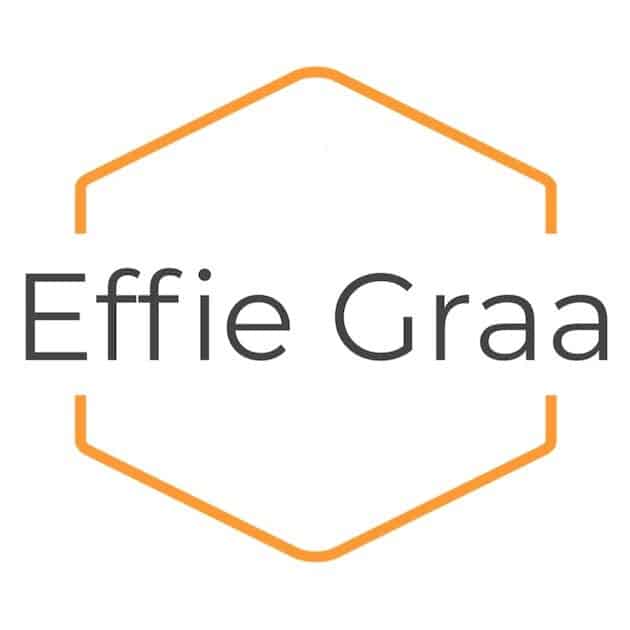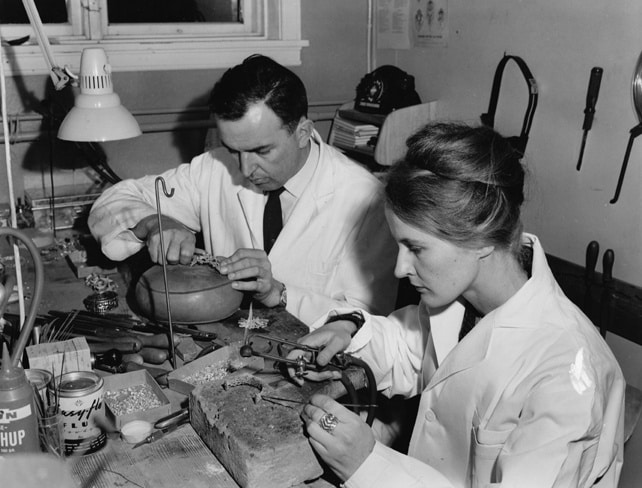
Studio Else & Paul, Else (1938-2002) and Paul (1934-1981) Hughes
Studio Else and Paul and the Studio Silver Movement
Else and Paul Hughes were part of the Studio Silver Movement in Norway in the early sixties. Paul C. Hughes was born 1934 in Leigh-on-Sea, Essex, England, Else Berntsen Hughes was born 1938 in Oslo, and they met in the Central School of Arts and Crafts, London. In 1959 they estasblished their workshop ‘Studio Else & Paul’ in Hadeland, near Oslo. In 1962 the workshop moved to Oslo and in 1967 to Asker, also in the Oslo vincinity.

Asceticism and simplicity
With the Studio Silver Movement, the trend in jewelry making became more ascetic, and the language of morphologi of jewelry in a way more simplistic. The value of a piece was not equivalent to the value of the materials used, more was it the artistic expression, as had been the case for a long time in the world of paintings et cetera, that gave of it’s value to the jewelry.
Also the small scale studios didn’t have the econimical ability to work in predominantly high cost materials. Bronze and local semi-prescious stones took over after gold and diamonds. In the same period there was also a trend towards tecniques that allowed serial production of jewellery to reduce production costs, thus making good art jewelry avaliable to a larger audience.
Scandinavia and other cultures
While artists like Tone Vigeland worked in the tradition of Modern Scandinavian silversmithery, Else & Paul got their inspiration from the jewelry of other cultures. They created their own form of artistic expression. The results were lines of lucious and diversified jewelry that soon enjoyed great popularity. The driving force of their creativity was the bold richness of their imagination, unconventionally inspired by handicraft and abstract art from socalled primitive cultures, and their creations perform a fine balance between free sculpture and worn jewelry.
In their own words: ‘The uniqueness of a piece of jewelry ought to be in the shaping of it, every object should be a composition with a character of it’s own, also where the amount of precious metal used is at a minimum’.
À Cire Perdue or the Lost Wax Method
The Hughes couple worked almost entirely in a tecknique of casting called ‘à cire perdue’ or the ‘lost-wax-method’. The piece of jewelry is first modelled in wax. Around this model is cast a mould of plaster. The mould is then heated so that the wax melts and comes out. Liquid silver is poured into the mould while it is rotating. Finally the jewelry is given a manual after-treatment.
Else & Paul Hughes together with the young Tone Vigeland were the most noticed of the jewelry designers in the Norwegian exhibition at the XII Triennale in Milan 1960. For Else & Paul this was to be the international break through. Their over 20 pieces of jewelry exhibited featured bracelets and brooches in sterling silver and gold.
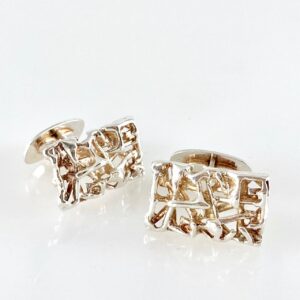
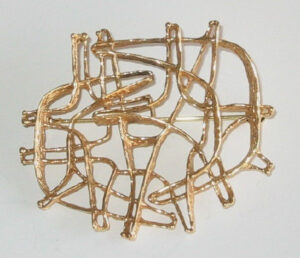
1960s.

Bronze with Eilat stone.
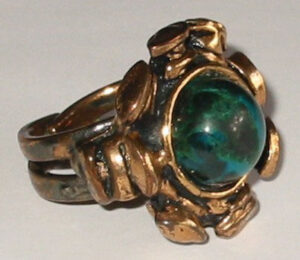
Bronze with Eilat stone.
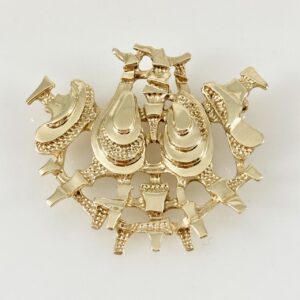
Gold, limited and numbered edition.
Table of Contents
Toggle